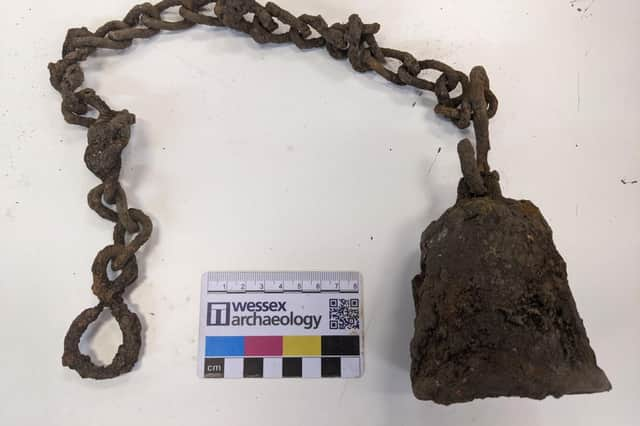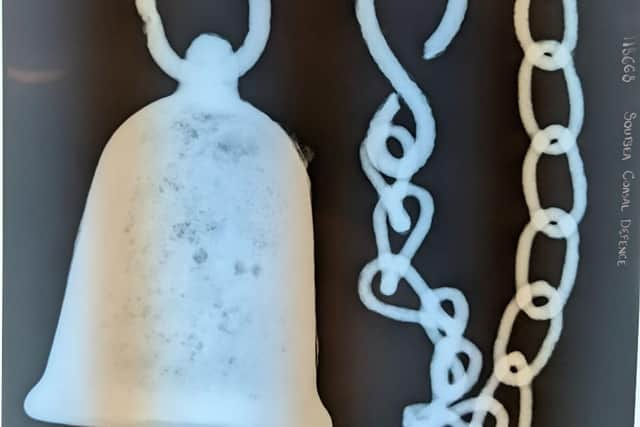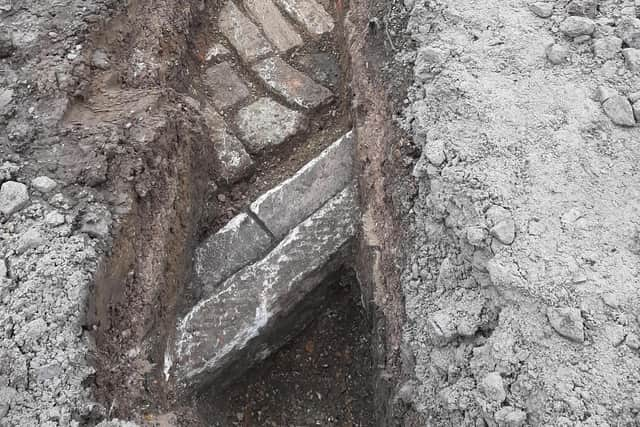Historic Victorian bell is unearthed in Southsea during scheme to shore up Portsmouth's sea defences


The bell was discovered by the Southsea Coastal Scheme team during work digging a trench to connect electricity on Castle Field.
The artefact was found at a depth of 60cm, just five metres away from a Victorian cobbled road that was also discovered at the same depth during the works.
Advertisement
Hide AdAdvertisement
Hide AdArchaeologists examining the finds believe that the road had a military purpose, leading to the possibility that the bell was attached to a wall on a military site.


Given that a military parade ground once existed on Castle Field, the bell could have been part of that development. An iron element to the bell appears to have been added to attach it to a wall.
Following gentle cleaning to remove corrosion from the bell's fragile copper elements, archaeologists conducted x-rays to see if any identifying marks could be seen to pinpoint its exact date and purpose.
No marks were discovered so, for now, the bell's origins remain a mystery.


Advertisement
Hide AdAdvertisement
Hide AdGuy Mason, Southsea Coastal Scheme project director said: ‘We are committed to working closely with on-site archaeologists to ensure that any historic remains are identified and recorded appropriately, as well as allowing our construction programme to continue without significant delays.’
Alex Godden, principal consultant for Wessex Archaeology, said: ‘This exciting and well preserved find has provided further tangible evidence of the military history of Southsea and contributes to the picture that we are beginning to build up from our ongoing archaeological discoveries on site.’
The discovery of the bell has now been recorded and it is planned to put it on display at the Southsea Coastal Scheme in the future.
The portions of Victorian road that were uncovered have been fully recorded and covered up, preserving them in situ.
Advertisement
Hide AdAdvertisement
Hide AdPortsmouth City Council, Wessex Archaeology and Historic England maintain regular contact to agree appropriate recording strategies as remains are uncovered. This is in line with the project’s Historic Environment Mitigation Strategy, as well as planning conditions and Scheduled Monument Consent.
The Southsea Coastal Scheme is the UK's largest council-led coastal defences project, worth more than £130m. It will stretch almost three miles from Old Portsmouth to Eastney, and help to reduce the risk of flooding to more than 10,000 homes and 700 businesses.
Comment Guidelines
National World encourages reader discussion on our stories. User feedback, insights and back-and-forth exchanges add a rich layer of context to reporting. Please review our Community Guidelines before commenting.
